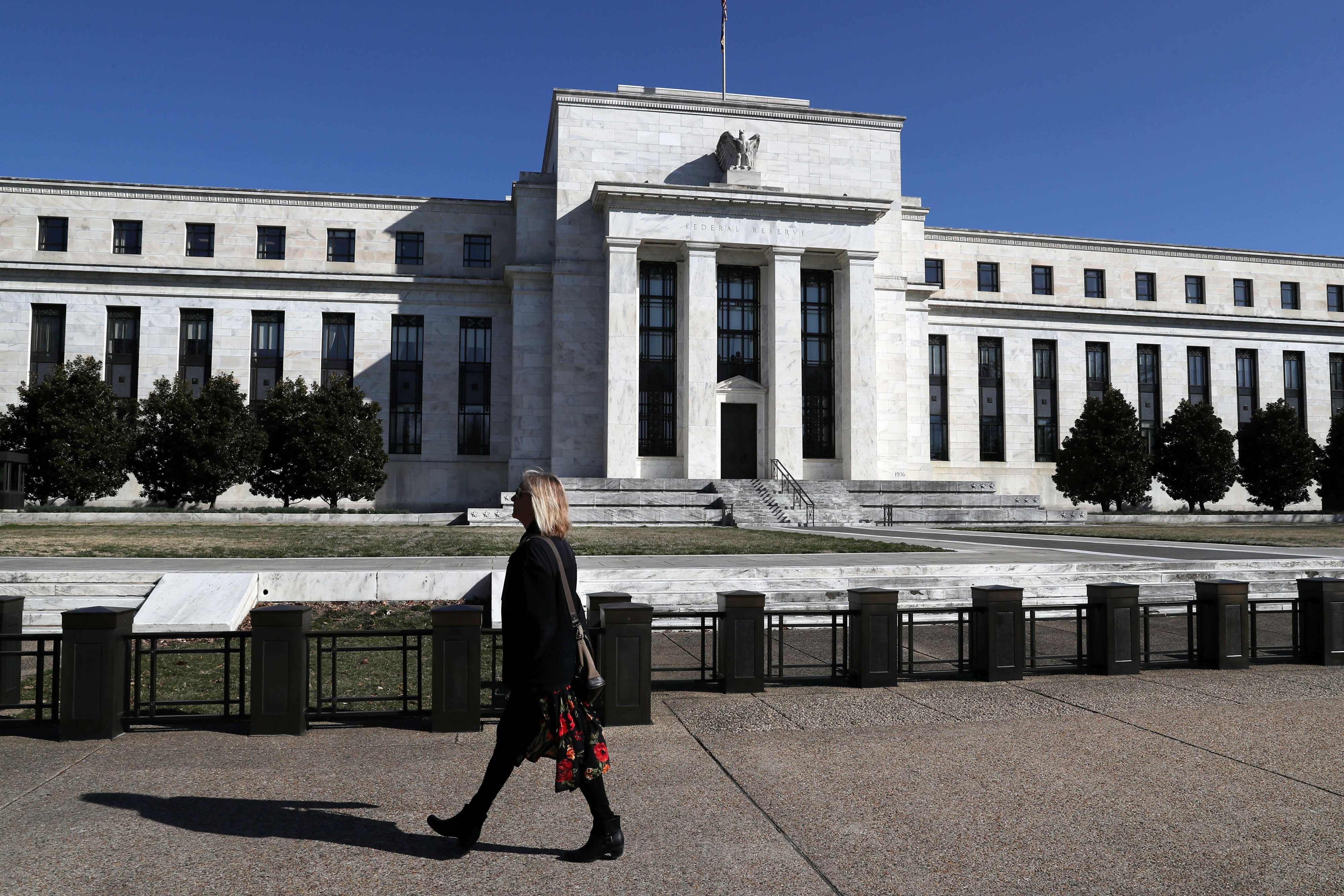A pedestrian walks past the Federal Reserve building on Constitution Avenue in Washington on March 19, 2019.
Leah Millis | Reuters
The Federal Reserve pulled out another series of bazookas today, including a flurry of programs to buy more Treasuries and mortgage-backed securities. But one move that surprised many was the decision to buy corporate bonds and corporate bond exchange traded funds.
“This is unprecedented action by the Fed,” Johnny Fine, head of Investment Grade Bonds at Goldman Sachs told CNBC’s Wilfred Frost.
”Wow … this is a whole new world,” Todd Rosenbluth, head of ETF and Mutual Fund Research at CFRA, tweeted.
Under a program called the Secondary Market Corporate Credit Facility, the Federal Reserve will be able to purchase corporate bonds, not just Treasuries. That alone is big news, but this program also allows for the purchase of ETFs that track the U.S. investment grade corporate bond market.
That means buying corporate bond ETFs like iShares Investment Grade Corporate Bond ETF or Vanguard Long-Term Corporate Bond ETF. Both were up about 7% today.
The Fed made a point that it’s buying spree would be only in investment grade corporate bonds, not high yield. Not surprisingly, high yield ETFs like iShares High Yield Corporate ETF were down 1.6%
The buying power is not unlimited — the Fed cannot own more than 20% of any one ETF, or 10% of individual corporate bonds.
While this is new for the United States, it is not unprecedented. Japan has been buying ETFs — both corporate investment grade and equity ETFs — for several years. The government has been so aggressive, it’s been estimated it owns about 80% of the entire ETF market there, according to etf.com
That hasn’t happened here yet. There are no plans for the Fed to buy equities — yet.
The Fed took its action in response to a dramatic drop in corporate bond prices in the past month, and as prices for some corporate bond ETFs at times traded at substantial discounts to the net asset values of the underlying bonds, implying bond prices were well behind what buyers were willing to pay.
Will the Fed, being an aggressive buyer of both bond ETFs and the underlying bonds that are in those ETFs, close that gap and create more liquidity?
Yes, says Dave Nadig, Director of Research at ETFtrends. “A broad buying pattern by the Fed will drop the NAVs down to real prices and put buying pressure on the bonds and the ETFs at the same time,” he said.
